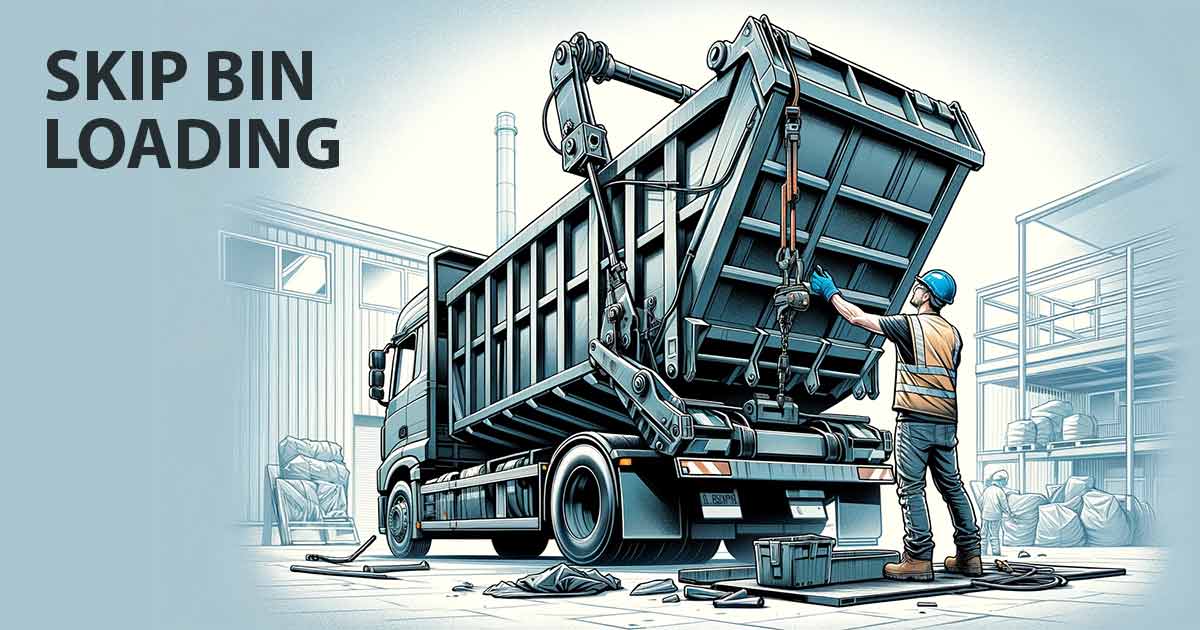
Loading and transporting a skip bin might seem like a simple task. However, doing it safely is crucial.
Not only for the safety of the people involved but also for the protection of the environment and the surrounding area.
We will walk you through the process to ensure you have all the information you need to do the job safely and efficiently.
Preparing for Loading
Proper preparation is key to safely loading a skip bin. Start by choosing a safe, level location to place the bin. It should be easily accessible but out of the way of regular traffic and not blocking any access ways. Ensure the area around the skip bin is clear of any obstacles that could pose a risk during loading.
Wearing the correct safety gear is also essential. This includes sturdy gloves, safety footwear, and a high-visibility vest. These items will protect you from injury while loading heavy or sharp items into the bin.
Safe Loading Practices
When loading your skip bin, distribute the weight evenly. Start with heavier items at the bottom and lighter, bulkier items on top. This will keep the bin balanced and prevent it from tipping over during transport.
It’s also important to break down larger items into smaller, more manageable pieces. This will make them easier to load and prevent overhanging, which can be a significant safety hazard.
Avoid throwing items into the bin from a height, as this can cause injury or damage to the bin. Instead, walk items into the bin or use a wheelbarrow for heavier items.
This method is safer and helps ensure that the skip bin is loaded evenly and efficiently.
Transporting the Skip Bin
Transporting a loaded skip bin should always be left to professionals. A reputable skip hire company will have the right equipment and expertise to move your bin safely.
They will ensure that the bin is correctly secured before transportation, reducing the risk of accidents or spillage.
Before the skip bin is taken away, double-check that it’s not overloaded. The contents should not exceed the height of the bin’s sides. If you’re unsure, ask the skip hire company for guidance.
They can advise you on safe loading practices and may be able to provide additional bins if needed.
Environmental Considerations and Waste Disposal
Proper waste disposal is not just a matter of safety; it’s also a matter of environmental responsibility. When loading your skip bin, be mindful of the items you’re disposing of.
Hazardous materials, such as chemicals, batteries, and asbestos, should not be placed in a standard skip bin. Instead, they require special handling and disposal.
Check with your local regulations and your skip hire company for guidance on disposing of hazardous waste safely.
Recycling is another important consideration. Many items that end up in skip bins can be recycled, reducing the amount of waste that goes to landfill.
Sort recyclable materials from non-recyclables when possible and use separate bins or bags. This not only helps the environment but can also reduce the cost of waste disposal.
Safety and Efficiency in Skip Bin Usage
Safely loading and transporting a skip bin is crucial to ensure the safety of individuals and the community.
By following this quick guideline, you can ensure that your waste is disposed of responsibly and efficiently.
Remember, preparation, safe loading practices, and choosing the right skip hire company are key to a successful and safe disposal process.
Whether you’re cleaning out your home, working on a construction site, or managing an office clear-out, these tips will help you manage your waste safely and effectively.

